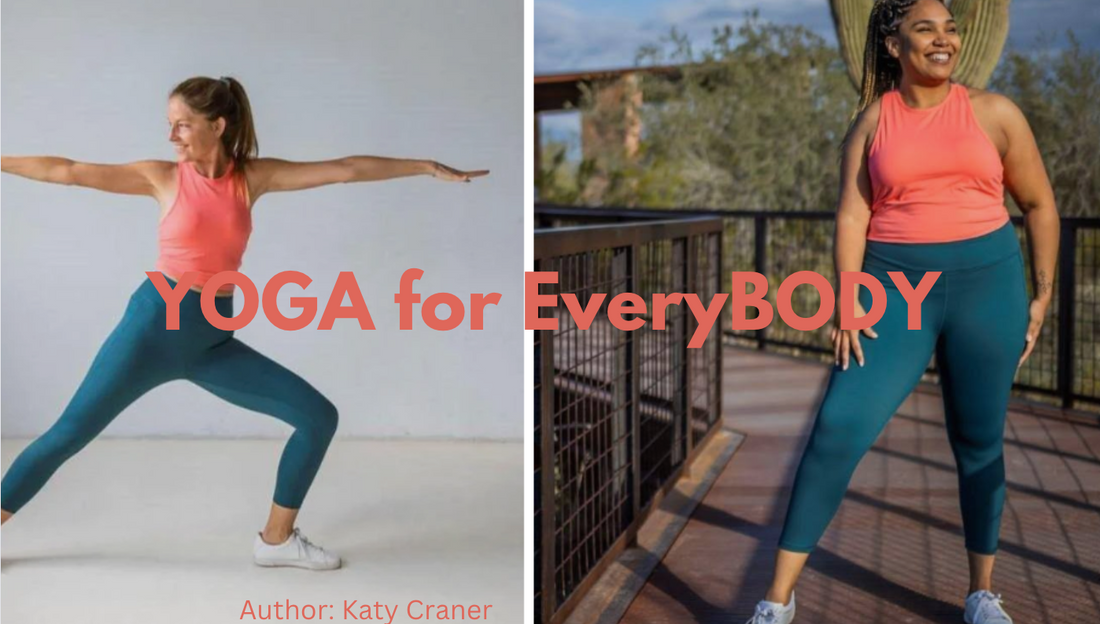Written By Katy Craner, 500-RYT & Co-Founder of The Body Benefits
When you hear the word, “yoga,” what do you think of? While poses or stretches are a common answer, you may not have guessed YOGA is divided into 8 different types of pathways or “limbs.”
THE 8 LIMBS OF YOGA

YAMA: Social Ethics - the way you interact with society. There are 5 Yamas: Ahimsa (non-violence), Asteya (non-stealing), Satya (truthfulness), Aparigraha (non-possessiveness), and Brahmacharya (fidelity).
NIYAMA: Personal Conduct - the way you interact with yourself. There are 5 Niyamas: Saucha (cleanliness), Santosha (contentment), Tapas (self-discipline), Svadhyaya (self-reflection), and Ishvara Pranidhana (surrender to a higher power).
ASANA: Postures
PRANAYAMA: Mindful Breathwork
PRATYAHARA: Meditation or Turning Inward
DHARANA: Concentration
DHYANA: Non-Concentration
SAMADHI: Pure Bliss
In this article, I will be talking about the most common practice: The Asana, and some of the different types of Yoga Classes you might see around your neighborhood or online. From classes that make you break a sweat to those that require little to no movement at all, there’s bound to be something here for everyBODY!
THE MOVERS:

VINYASA means “to place in a special way.” This type of yoga is an energetic practice that matches pranayama (breathwork) to asana (posture) - often linking one breath per movement. Be prepared to move for the bulk of the class, which can range from 60-90min. Within this genre, there are spin offs like Power Vinyasa, Flow Yoga, and YinVin (combining fast paced movement with longer stretches in between).
ASHTANGA literally translates to “having eight limbs” so it’s no wonder this type of yoga is a popular choice. There are 3 series of set poses that are performed in a specific order. Ashtanga focuses on Breath, Asana, and Drishti (gaze). It is a fast paced practice that challenges the mind and body connection.
HATHA yoga is a generic term for “any kind of yoga.” It’s the combination of singular poses that invite pranayama and meditation. This type of yoga class is popular because of its variance in well-rounded postures that are held for a period of time, instead of flowing with the breath. It’s likely you won’t practice the same sequencing over and over again. For people looking for a yoga class to start with, Hatha is a great option.
BIKRAM yoga is essentially Hot Yoga. The room is set to 105ºF and 40% humidity, so prepare for a sweaty class. Bikram Yoga is a set of 26 Hatha poses that are performed twice.
IYENGAR yoga is all about the mechanics, alignment, and performance of the asanas. It is believed that a meditative state can be reached the more precise and accurate you are within each asana. Props are used and encouraged to reach this. Postures are held longer than those in Ashtanga or Vinyasa.
THE STILLNESS:

YIN yoga is a slower practice, often holding postures for a longer period of time, sometimes up to 5 minutes. While holding a posture for a longer time may seem like a really good stretch, Yin Yoga often incorporates both passive and active holds, so you can increase your range of motion, strength, and flexibility.
RESTORATIVE yoga is a restful, meditative practice, where you hold a posture comfortably with props for a long period of time. This practice is said to facilitate healing, de-stressing, balancing the nervous system, and just like its name: finding restoration.
NIDRA yoga is a guided meditation that is listened to while in one comfortable position. There is no motion in Yoga Nidra. The purpose of Nidra is to recharge through NSDR (non-sleep deep rest). It may be a shorter class or added to the end to another type of yoga class. You may find yourself in deep relaxation physically, mentally, and emotionally.
THE SPECIALTIES:

Don’t forget about the specialties! These are the classes that take yoga elements and spin them in a unique way. They’re often exciting, engaging, and very community-driven. To list a few: Pre/Post Natal Yoga, Kids Yoga, Acro Yoga, Chair Yoga, Aerial Yoga, Yoga Sculpt, Yoga HIIT, ButiYoga, Rocket Yoga, and Budokon Yoga.
CONCLUSION:
Finding a yoga class that is right for you will take time and exploration. Don’t be surprised if it changes every now and again. The wonderful thing about Yoga is it creates a more mindful and connected state of living.
Yoga helps us be more active than reactive. Within the different seasons of our lives, yoga can help us glow as we grow. That is why no matter what limb(s) we practice, YOGA is for everyBODY.
Sources: Katy Craner, 500hr RYT & Co-Founder of The Body Benefits, “Yoga Sutras of Patanjali” by Sri Swami Satchidananda
Pictures: Senita Athletics & Katy Craner, The Body Benefits
Edited by Amy Will 17x Marathoner
